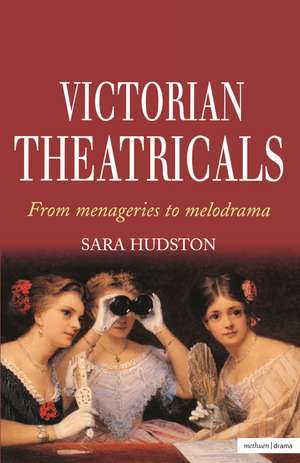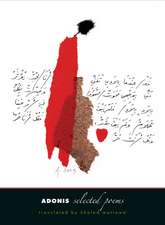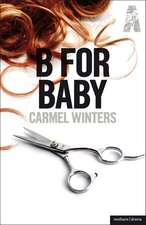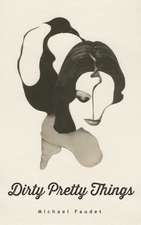Victorian Theatricals: Diaries, Letters and Essays
Autor Sara Hudstonen Limba Engleză Paperback – 10 mai 2000
By the 1890s the British theatre had transformed itself into a world where spectacles and public shows were aimed at the widest audience possible. The theatre had become big business. This anthology brings together a variety of plays and prose which sets this phenomenon in perspective and traces the development of Victorian theatricals from private home events in the late-Georgian period to full-scale Gilbert and Sullivan operettas in the 1890s. The section 'Theatrical Behaviour' looks at the world of the audience and includes extracts from Jane Austen's novel Mansfield Park; Thackeray's Vanity Fair; an anonymous playlet called Acting Proverbs; and an extract from Marie Corelli's novel Sorrows of Satan. In 'Fun and Freaks' we explore the world of popular, sensationalist entertainment through the eyes of Dickens, Thomas Hardy, Dion Boucicault and others. In the final section, 'Society', we have the scripts for four principal melodramas and serious plays of the age: The Factory Lad by John Walker; Society by T.W. Robertson; The Mikado by W.S. Gilbert and The Second Mrs Tanqueray by Arthur Wing Pinero.
Preț: 169.10 lei
Nou
Puncte Express: 254
Preț estimativ în valută:
32.36€ • 33.87$ • 26.77£
32.36€ • 33.87$ • 26.77£
Carte tipărită la comandă
Livrare economică 05-19 aprilie
Preluare comenzi: 021 569.72.76
Specificații
ISBN-13: 9780413744609
ISBN-10: 0413744604
Pagini: 431
Ilustrații: 1
Dimensiuni: 135 x 216 x 33 mm
Greutate: 0.5 kg
Editura: Bloomsbury Publishing
Colecția Methuen Drama
Seria Diaries, Letters and Essays
Locul publicării:London, United Kingdom
ISBN-10: 0413744604
Pagini: 431
Ilustrații: 1
Dimensiuni: 135 x 216 x 33 mm
Greutate: 0.5 kg
Editura: Bloomsbury Publishing
Colecția Methuen Drama
Seria Diaries, Letters and Essays
Locul publicării:London, United Kingdom
Descriere
Sara Hudston collects a range of plays, literature and writings about private and public theatrical spectacles during the Victorian era to show how British theatre had, by the 1890s, reached out to the widest audience possible.






























